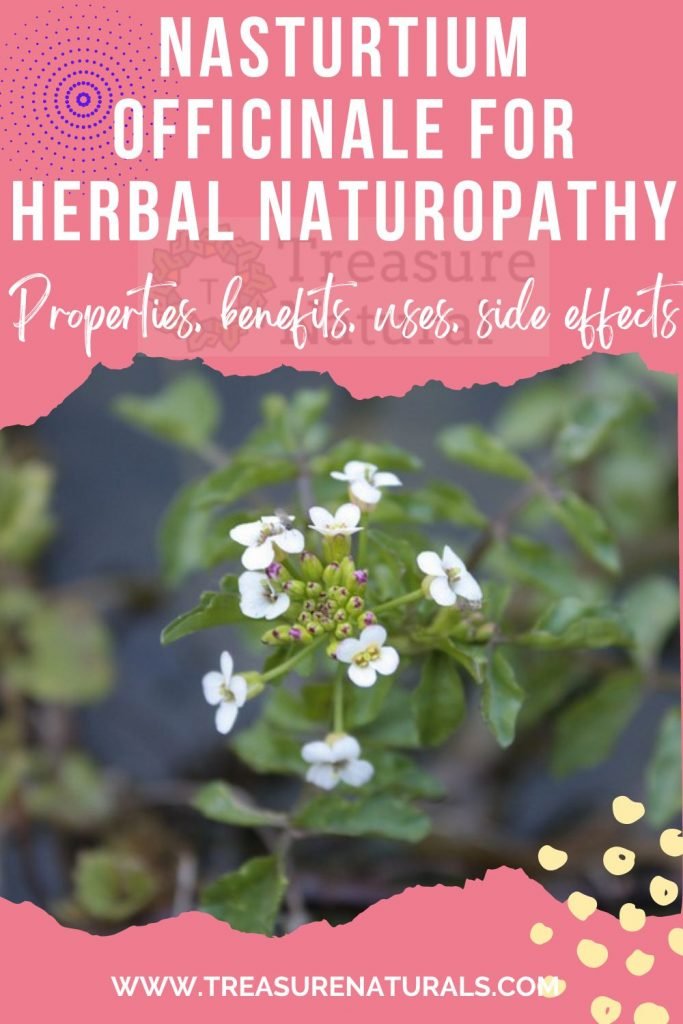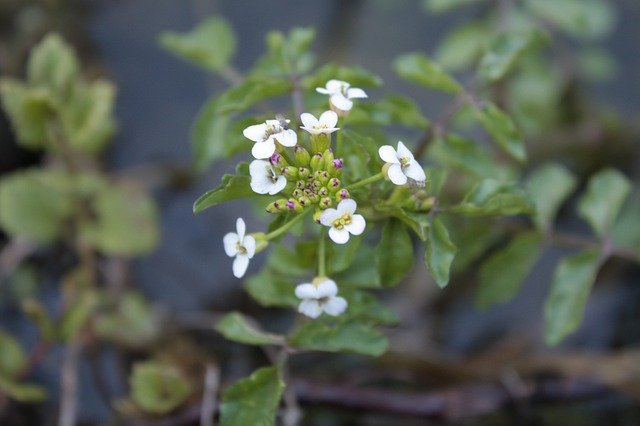
Nasturtium officinale is a medicinal plant rich in folic acid, omega-3 and vitamin K, very useful as a diuretic and digestive. It is also an excellent source of natural isothiocyanates, precious allies in the prevention of tumors. Let’s find out better.
Properties of Nasturtium officinale
Officinal nasturtium or watercress is a medicinal plant very rich in folic acid, calcium, manganese, iron and phosphorus, but above all in vitamin K, vitamin C, beta carotene, lutein and zeaxanthin.
It is to be considered a decent source of omega-3 and there are numerous properties that are attributed to it. The richness of vitamins, especially ascorbic acid, make it an excellent antioxidant, useful as a diuretic, digestive, expectorant and remineralizing.
It turns out to be an excellent source of natural isothiocyanates, precious allies in the prevention of tumors, especially those affecting the capillary vessels (angiogenesis).
It is part of the “cabbage” family, if we can say so, and shares with them many nutritional and healing characteristics, especially those that prevent tumors, especially that of the breast.
All its properties are concentrated even more in its shoots, among the best for human health, excellent as toning, energizing, remineralizing. It contains good doses of dietary fiber and vegetable proteins
How to use
Inside: the best way to use nasturtium officinale is to eat it: scalded in a thousand traditional recipes where it replaces any other green leafy vegetable such as spinach, chard or cabbage. The intense and strong flavor testifies to how much in the officinal nasturtium are concentrated all the substances common in the Brassicaceae family. The collection of leaves during the flowering of the plant prevents excessive acidity of the leaves.
Outside: macerated nasturtium officinal seeds and the leaves pounded in the mortar can be used to protect and nourish the skin, and for toning hair washes.
Contraindications of Nasturtium officinale
Inhibitory effects on certain haemoproteins have been found to be potential side effects of watercress. Non-positive interactions between the active ingredients of nasturtium and those of certain drugs are also possible.
Excessive cooking of the plant causes the evaporation of its active ingredients, rather volatile, making it practically no longer useful.
Description of the plant
The main part of the officinal nasturtium are the small round leaves, intense green, thick, the main means to identify the species at first glance and the most important part to be consumed in the kitchen and to be used for phytotherapeutic and herbal purposes.
While the roots must be as much as possible in the constant presence of water, the apical part of the plant, which rarely exceeds ten centimeters, has small white flowers in spring.
Habitat of Nasturtium officinale
It is a water-loving plant (preferably alkaline), often found along the banks of rivers, ponds, rice fields, swampy soils. It loves half shade and is easily cultivable even on a large scale, especially with the method of hydroponic cultivation.
Nowadays it is only rarely grown and mostly harvested spontaneously. In many northern European countries there is still some form of cultivation of nasturtium, where some recipes provide it consumed instead of the more common cabbage.
We can deduce the goodness of the conditions of the habitat of nasturtium officinal from its growth rate, since when it finds the best conditions it has a particularly fast growth.
Background

There is in Emilia and Romagna a particular typical recipe called “watercress”: it is good or bad a kind of piadina or calzone stuffed with cheese and wild herbs of the field, the main of those is the officinal nasturtium.
Speaking of “nasturtium” we often run the risk of confusing two different plants: on the one hand we have the Nasturtium officinale, a officinal brassicacea commonly called watercress; on the other we find the Tropaeolum majus, a tropaeolacea whose vulgar name is nasturtium.
Although the latter is also edible, it is not considered a medicinal plant. Hints of its use as a medicinal plant date back to the time of Hippocrates






